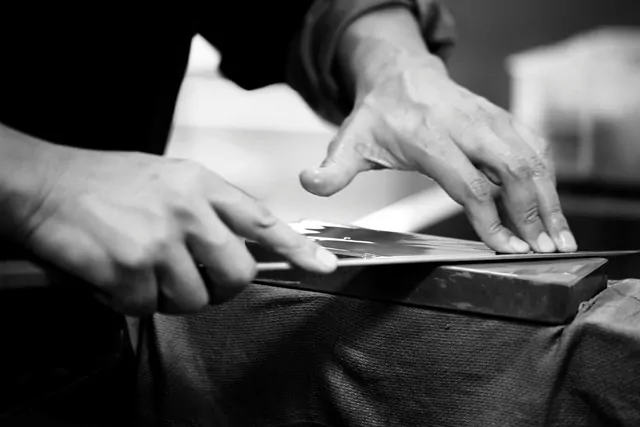
There is nothing worse than a dull knife.
Or a chipped knife.
Or a rusted knife.
Or…
Well, you get the point. Once you lay down some big bucks on a beautiful Japanese knife, you’re going to want to take care of it.
Knowing how to correctly care for and sharpen your blade will not only make it more effective, but will also prolong its useful life and give you many years of loyal service.
In this guide, I will go over some basic Japanese knife care tips. Let’s get started!
How to clean Japanese knives
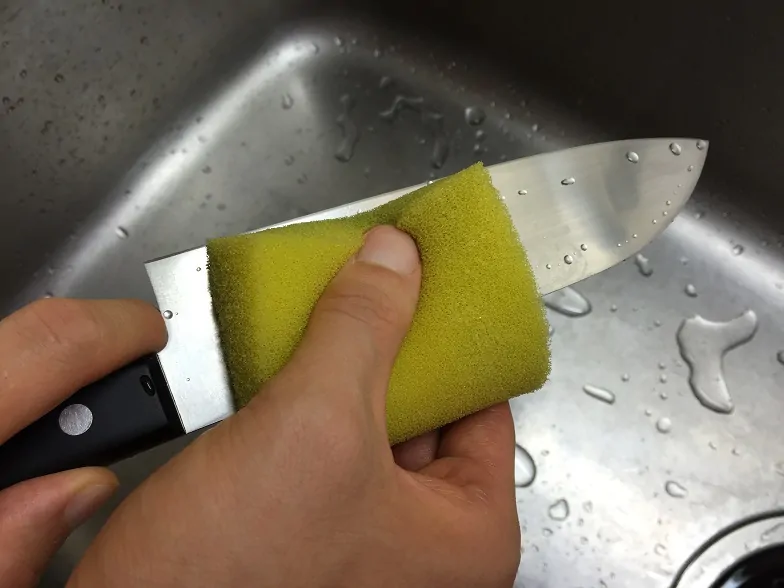
You should always hand wash, and hand dry your knife (don’t forget the handle). Never put it in the dishwasher. Simply use a soft sponge, some dish soap, and hot water.
Some entry-level knives will say they are “dishwasher safe”, but I think it is best to get in the habit of hand washing and drying. If you put the knife in a dishwasher, there is also a chance it will rattle around and damage the cutting edge.
Many high-carbon steel knives will rust, or discolor quickly if left wet for a short period of time. Therefore, it is good habit to always have a dry towel on hand that you can use to quickly wipe off moisture as you prep food.
General Usage
Never try to use your Japanese knife to cut through hard bone, or hard surfaces. You will probably chip your blade.
Japanese blades are typically made from very hard steel (60+ HRC). This allows the knife to retain a sharp edge for a long time, but also makes it more brittle and prone to chipping.
The blades are also usually thinner, with a more acute cutting edge than a typical Western-made knife. This further increases the potential of chipping if used incorrectly.
Proper cutting technique

You also need to be using proper cutting technique. This means using a smooth cutting motion, and not exerting an excessive amount of force to drive your knife down into the cutting board. If you find yourself using lot of strength, either your knife is not sharp enough; you are using the wrong type of knife; or you are trying to cut something that you should not be.
Cutting Boards
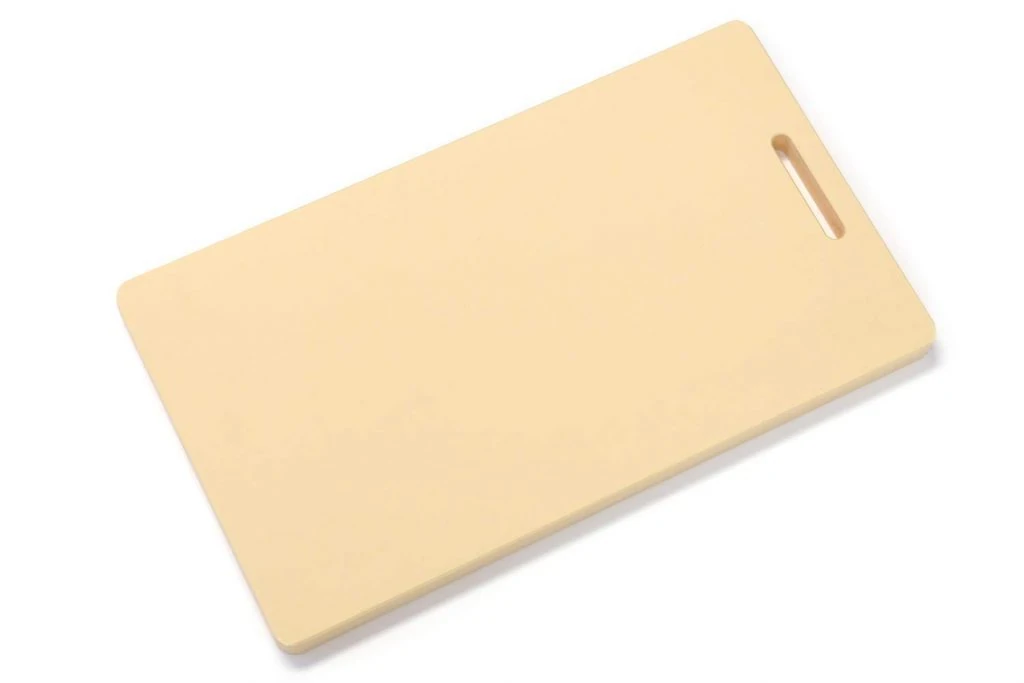
The cutting board you use is an important factor in maintaining your knife. It should not be so hard that it damages your blade.
Soft synthetic materials like Hi-soft (polyvinyl acetate), All-rubber, and polyethylene are the most recommended cutting board materials. They are gentle on your knife, and easy to clean.
Certain woods are also recommended. Hinoki is the most popular wood type used for Japanese cutting boards. It is also the most expensive. Other wood types include ginkgo, willow, hiba, paulownia, and magnolia.
If you are on a tight budget, you can find a cheap soft plastic (polyethylene) board, but they tend to scratch easier and are more difficult to clean.
Avoid cutting boards made of hard materials like bamboo, granite, stainless steel, hard plastic or edge-grain wood. Using these materials will dull or damage your knife edge quickly.
For more about cutting boards, check out this article: 5 Best Cutting Boards
Japanese Knife Storage
After cleaning and drying your knife, there are a few options for day to day storage of your knife.
- Magnetic Strip
You can mount it on your wall, or fridge. This is a great, and cheap option for smaller kitchens, as it can save a lot of that precious counter space. The only issue is that it does not offer any blade protection, but this shouldn’t be a problem if you pick a good spot that avoids anything banging into your knives. - Knife Block
The good ol’ knife block. Knife blocks come in many styles, and are convenient to use. They are easy to use, and protect the blade. The only downside is that they take up valuable counter space. Make sure you buy one that is tall enough for your knives, and is “universal” (i.e. they can fit any knife size). - Drawer storage / blade cover
There are also some knife blocks / inserts that that fit within a drawer. This is great if you have an extra drawer to use. If you are just putting your knife loose in a drawer, make sure you use a sheath or blade guard to protect the knife (and your fingers when reaching in).
- Travel Bags
Some people like to travel with their knives. There are plenty of great knife rolls, bags, and cases to choose from. At bare minimum, make sure you have a blade guard on your knife.
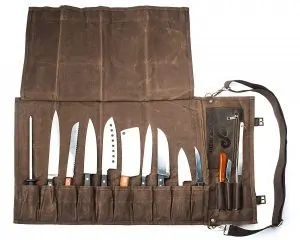
Long term storage of high carbon knives
High-carbon steel blades will rust if left to sit outside for awhile. If you are not planning to use your knife for an extended period of time (i.e. holiday, business trip, etc.), here’s an easy easy way to store the knife:
First make sure the knife is completely dry. Then, simply wrap it tightly in a bunch of newspaper.
Newspaper provides good breath-ability, and the ink can help prevent the blade from rusting. Make sure to put the knife somewhere that is well ventilated with low air-humidity.
Japanese Knife Sharpening Tips
A good Japanese kitchen knife will maintain its sharp edge for a very long time. Eventually though, it will become dull over time and extended usage.
Establishing a regular sharpening routine is a good idea. Professional chefs may sharpen their knives everyday. At-home chefs can probably get away with sharpening their knives once per month or so.
Why Sharpen your Knife?
First, a sharp knife cuts better. This seems like an obvious statement, but a knife that cuts better /cleaner means quicker, and more enjoyable prep with less wasted effort. Cleaner cuts also helps protect your ingredients.
A blunt knife can damage your ingredients, especially more delicate herbs, vegetables, and fruits (e.g. tomatoes!). Cleanly cut ingredients will maintain their color and flavor longer, as they sustain less bruising / cell damage around the cut area.

In Japanese cooking, using a sharp blade is especially important. For many traditional dishes, the appearance is equally as important as taste, and preparation requires intricate, finely cut ingredients.
For example, when preparing sushi / sashimi, using a blunt knife will not only ruin the beautiful appearance of the raw fish, but also the texture and taste.
Second, a sharp knife is safer.
A dull knife can slip off your ingredients when cutting, as it is not sharp enough to penetrate the surface. If you are not careful, the blade can slide into your other hand or fingers. It will still be sharp enough to cut your finger’s skin.
A dull knife will also cause you to use more force when cutting, which can further result in accidents, and bloody fingers.
Knife Sharpness Test
How do you know if your knife is sharp enough?
A simple paper test is a good indicator of whether your knife needs to be sharpened or not.
Simply take a standard piece of printer paper or newspaper, hold it up, and slice through it with your knife.
If you can easily make clean slices through the paper, then your knife is sharp! See the video below for an example. (Via nozakitoru123 on Youtube. He’s not using a kitchen knife, but same rule applies):
Another simple test is to cut a sponge or tomato. If you can easily, and cleanly slice through a tomato without using your off-hand to hold it, then your knife is sharp enough! See video below for an example (via Harry Kaufman on Youtube).
Using Honing Rods for Japanese knives
As a general rule, never use honing rods to sharpen your Japanese kitchen knife. This has been mentioned by many chefs and knife experts much smarter than myself.
Quick fact:
Most honing rods don’t actually sharpen the blade. They realign or straighten the knife’s edge after it has become bent/deformed from repeated use.
So, why not use a honing rod for Japanese knife sharpening?
Japanese kitchen knives are typically made with a very hard steel (60 HRC or higher) compared to German steel knives (~55 HRC).
Softer steel is more suitable for honing, as the edge can easily curl or deform with standard usage, and therefore can also easily be straightened out with a honing rod.
On the other hand, Japanese knife steel will not curl or deform, and therefore does not require honing. Harder steel is more brittle, so using a honing rod runs the risk of chipping the blade.
Therefore, there is no reason at all to use a honing rod with a Japanese knife.
If you feel your knife is getting dull, then it may be time to sharpen using a Japanese whetstone.
Sharpening with a whetstone

Using a whetsone is the only recommended way to sharpen your Japanese knife. Typically, a medium grit whetstone is all that is needed to start.
For beginners, the task of sharpening your own knife can be daunting, but the process is actually quite straight forward. As with everything though, practice makes perfect.
How do you sharpen using a whetstone? Check out my step-by-step guide here
If you are not comfortable trying on your own, you can try to find a local sharpening class. Many manufacturers also offer sharpening services (for a price), so you can avoid doing it yourself altogether. But, what’s the fun in that??
Conclusion
In this article, we have gone over some general tips for maintaining your Japanese knives (washing, usage, storage).
We also learned why it’s important to keep a sharp blade, and that you should only use a whetstone to sharpen Japanese knives.
If you have any other tips or questions, leave a comment below, or feel free to contact me.
What to read next:
Learn how to use a whetstone to sharpen your Japanese knife with this step-by-step guide.
Looking for whetstone recommendations? Read this buying guide to find best whetstone for yourself.
Need a new knife? Check out some of the best Japanese knives here, as well as the best chef knives (gyuto) under $100.
Subscribe for free today! Receive cool recipes, my latest Japanese knife picks and learn about Japanese culture. Delivered every other week to your inbox.
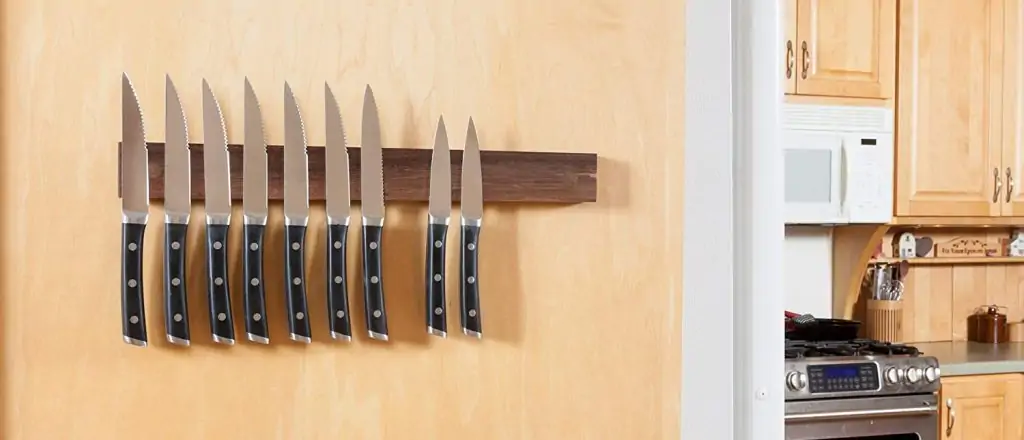
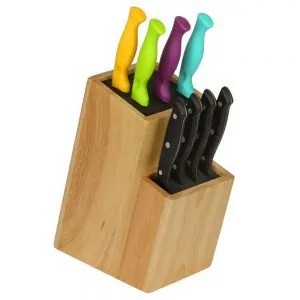
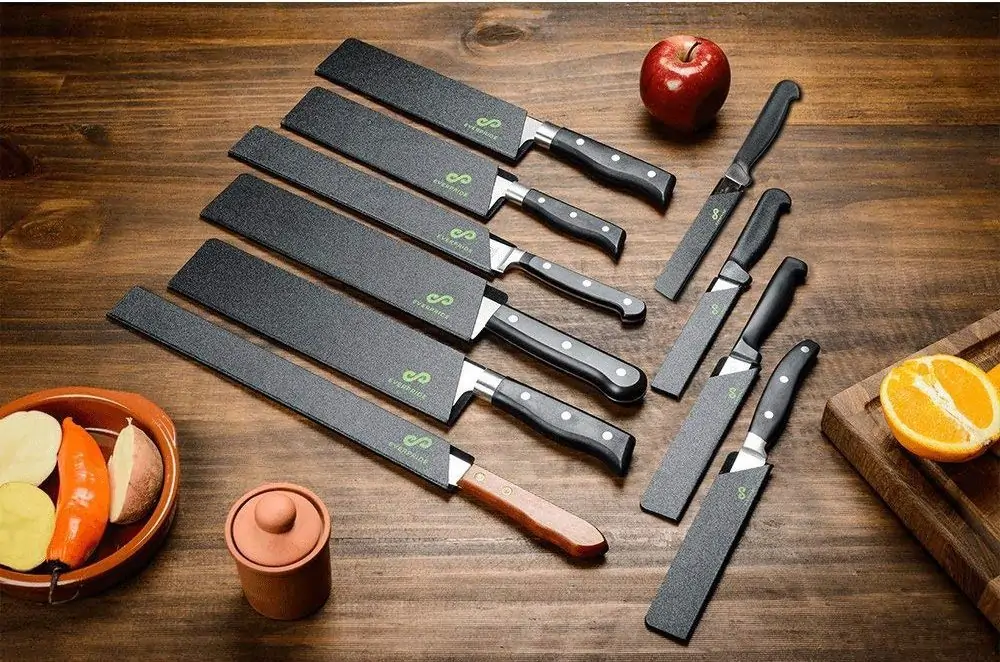
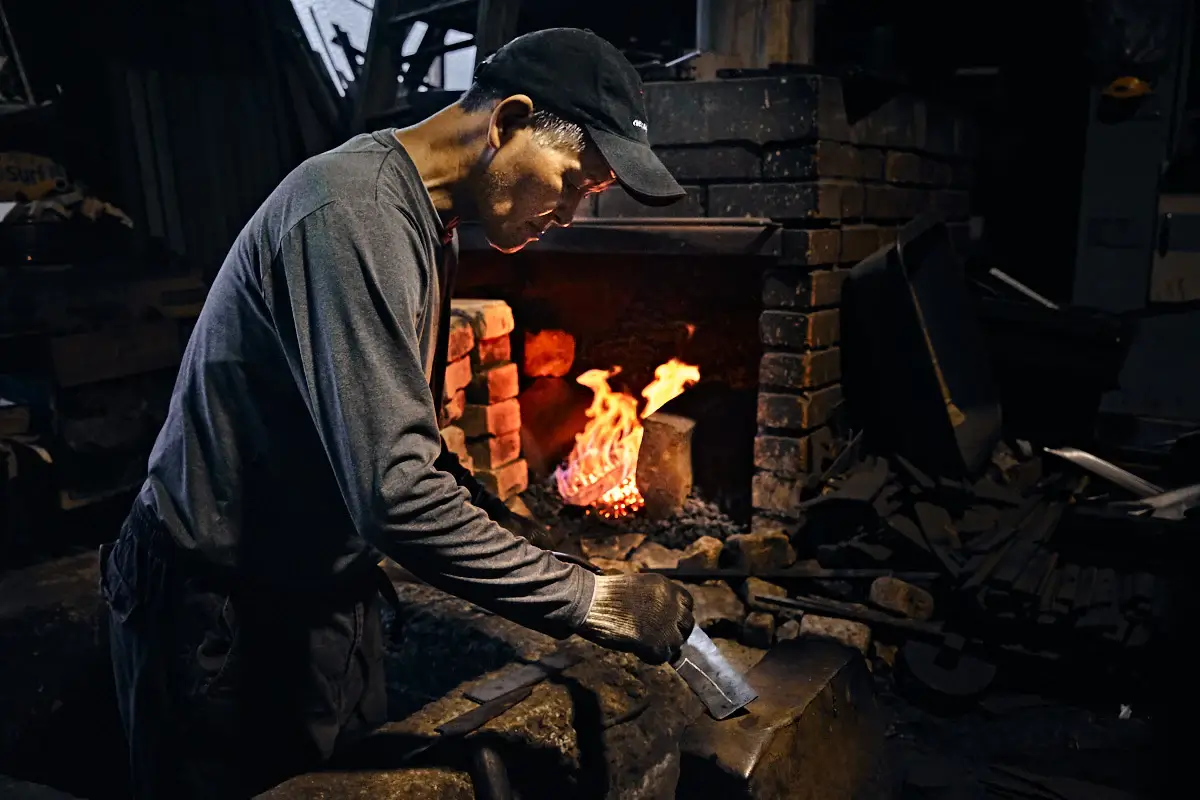
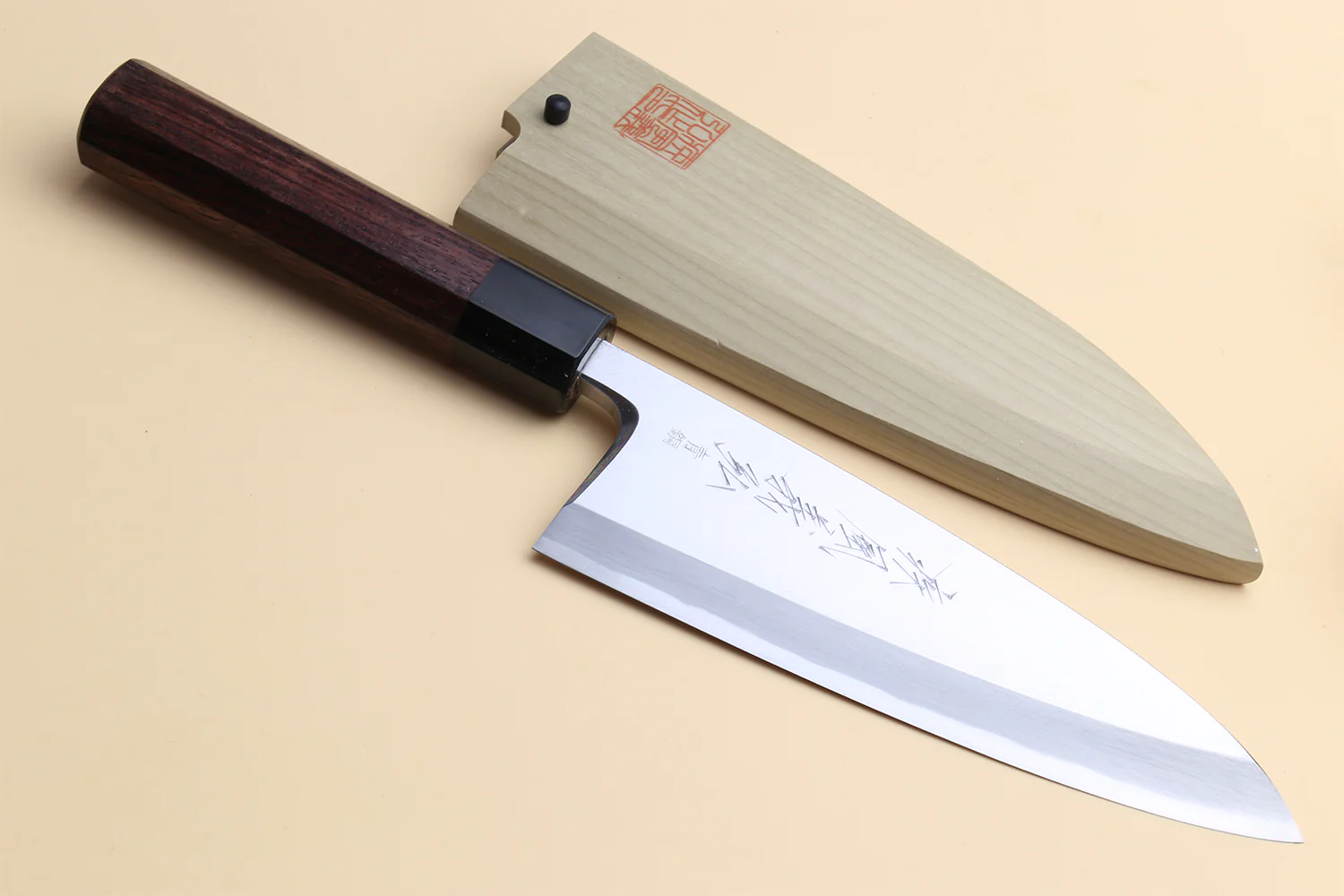
i have taken some rust off a large knife with 800 and 2000 grit paper. does it not need and mineral oil or other protection applied then removed? it will now be used daily and sharpened with a whetstone.